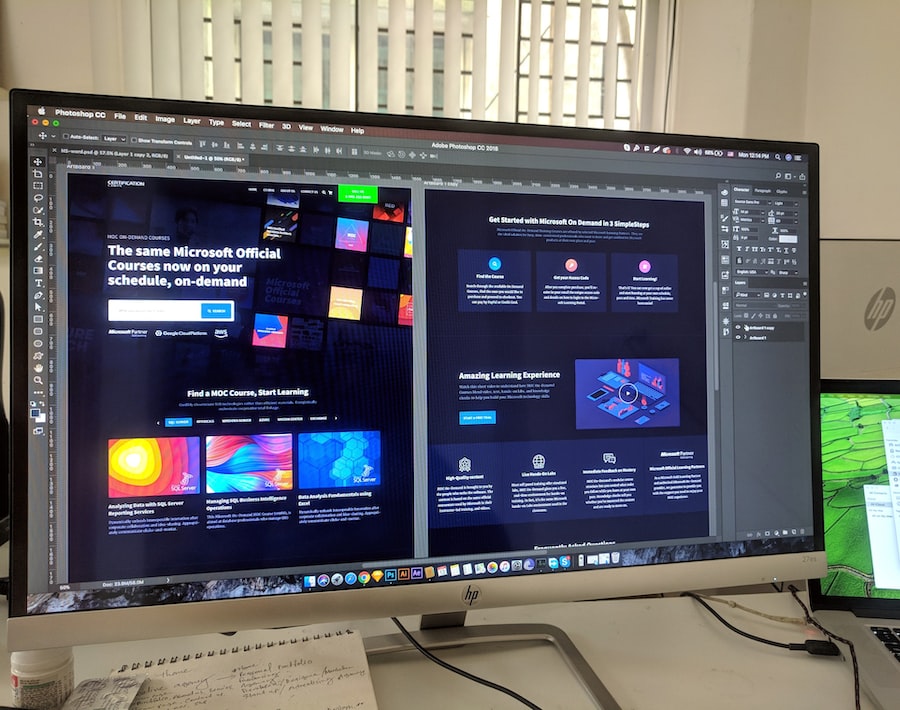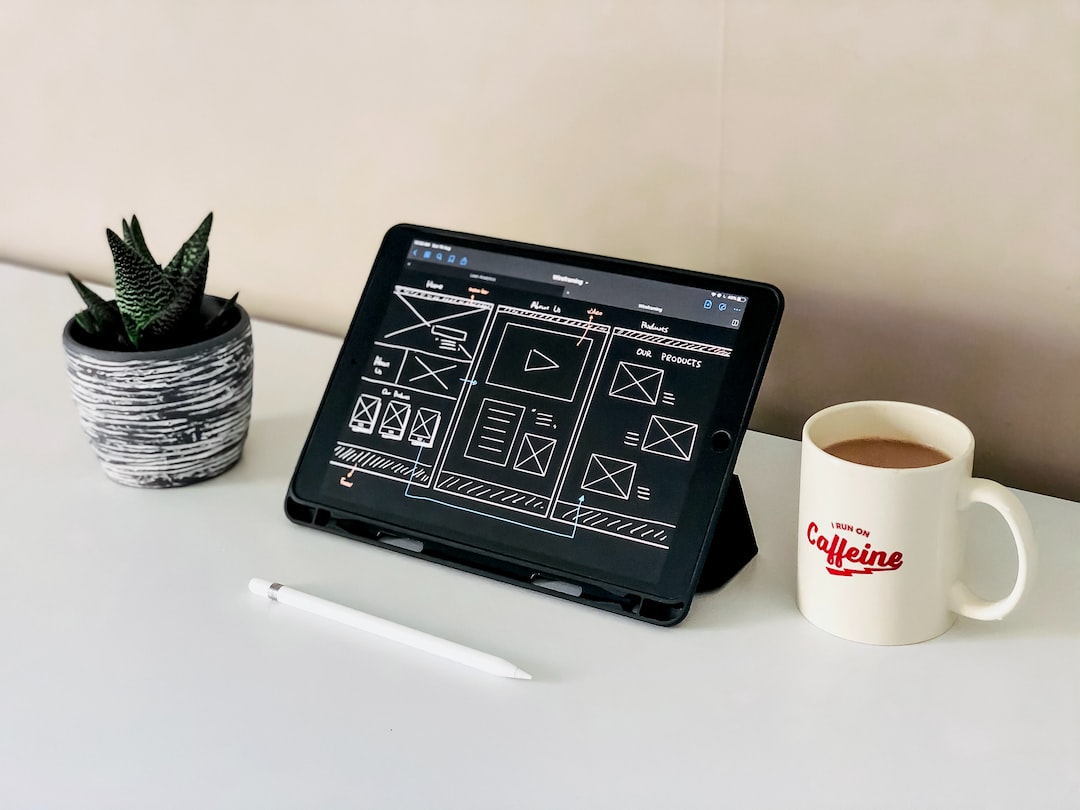User-centered design is a crucial aspect of website development. It focuses on creating websites that are tailored to the needs and preferences of the target audience. By understanding the users and designing with their needs in mind, developers can create websites that are intuitive, user-friendly, and engaging. This article will explore the importance of user-centered design in website development and discuss how it can improve user satisfaction, website usability, and accessibility.
Understanding the User: The Key to Effective Website Design
Understanding the target audience is essential for effective website design. By gaining insights into their demographics, preferences, and behaviors, developers can create websites that resonate with the users. One way to understand the users is by creating user personas. User personas are fictional characters that represent different segments of the target audience. They are created based on research and data collected from real users.
User personas help in understanding the users’ goals, motivations, and pain points. They provide a clear picture of who the users are and what they expect from a website. By designing with these personas in mind, developers can create websites that meet the needs and expectations of the users. For example, if the target audience consists of tech-savvy millennials who value convenience and speed, the website should have a modern design, fast loading times, and easy navigation.
Designing for User Needs: The Importance of User-Centered Design
Designing for user needs is crucial for creating a successful website. By focusing on what the users want and need, developers can create websites that provide value and solve their problems. This approach not only improves user satisfaction but also increases the chances of achieving business goals.
User-centered design has several benefits. Firstly, it helps in creating a positive user experience. When users find a website easy to navigate, visually appealing, and informative, they are more likely to stay longer, explore more pages, and take desired actions such as making a purchase or filling out a form. This, in turn, increases user satisfaction and loyalty.
Secondly, user-centered design improves website usability. By designing with the users in mind, developers can create websites that are intuitive and easy to use. This reduces the learning curve for new users and minimizes the chances of errors or confusion. A user-friendly website not only improves the overall user experience but also reduces support costs and increases efficiency.
The Benefits of User-Centered Design: Creating a Seamless Online Experience
User-centered design plays a crucial role in creating a seamless online experience. When users visit a website, they expect it to be easy to navigate, visually appealing, and responsive. By designing with the users in mind, developers can create websites that meet these expectations and provide a seamless experience.
A seamless online experience is essential for user satisfaction and engagement. When users can easily find what they are looking for, complete tasks without obstacles, and have a pleasant overall experience, they are more likely to stay longer on the website, explore more pages, and take desired actions. This increases user satisfaction and loyalty.
User-centered design also improves website accessibility. By considering the needs of all users, including those with disabilities or limitations, developers can create websites that are inclusive and accessible to everyone. This not only improves the user experience but also ensures compliance with accessibility standards and regulations.
User-Centered Design Principles: Putting the User First
User-centered design is guided by several key principles that put the user first. These principles include:
1. Understand the users: This involves conducting user research to gain insights into their needs, preferences, and behaviors. By understanding the users, developers can create websites that meet their expectations.
2. Involve users throughout the design process: Users should be involved in every stage of the design process, from research to testing. Their feedback and input are invaluable in creating a user-centered website.
3. Design for usability: Usability is a key aspect of user-centered design. Websites should be easy to navigate, visually appealing, and intuitive. This reduces the learning curve for new users and improves the overall user experience.
4. Provide clear and concise information: Users should be able to find the information they need quickly and easily. Content should be organized, well-written, and visually appealing.
5. Test and iterate: Usability testing is crucial for identifying usability issues and improving the user experience. By testing the website with real users, developers can gather feedback and make necessary improvements.
The Role of User Research in Website Design: Understanding User Behavior

User research plays a crucial role in website design. It involves gathering data and insights about the target audience to understand their needs, preferences, and behaviors. By understanding user behavior, developers can create websites that meet their expectations and provide a positive user experience.
User research can be conducted through various methods such as surveys, interviews, and analytics. Surveys and interviews help in gathering qualitative data about the users’ goals, motivations, and pain points. Analytics provide quantitative data about user behavior on the website, such as page views, bounce rates, and conversion rates.
By analyzing this data, developers can gain insights into how users interact with the website, what content they find valuable, and what obstacles they face. This information can then be used to inform the design decisions and create a user-centered website.
Usability Testing: Ensuring a User-Centered Website Design
Usability testing is a crucial step in ensuring a user-centered website design. It involves testing the website with real users to identify usability issues and gather feedback for improvement. By observing how users interact with the website, developers can gain insights into its strengths and weaknesses.
Usability testing helps in identifying usability issues such as confusing navigation, slow loading times, or unclear instructions. By addressing these issues, developers can improve the user experience and increase user satisfaction. Usability testing also helps in gathering feedback from users, which can be used to make necessary improvements and iterate on the design.
The Impact of User-Centered Design on Website Conversion Rates
User-centered design has a significant impact on website conversion rates. When users find a website easy to use, visually appealing, and informative, they are more likely to take desired actions such as making a purchase or filling out a form. This increases the conversion rates and ultimately leads to business success.
By designing with the users in mind, developers can create websites that provide value and solve their problems. This increases user engagement and loyalty, which in turn improves conversion rates. User-centered design also reduces the chances of errors or confusion, which can lead to abandoned carts or incomplete forms.
User-Centered Design and Branding: Creating a Cohesive Online Experience
User-centered design plays a crucial role in creating a cohesive online experience. By designing with the users in mind, developers can create websites that align with the brand identity and provide a consistent experience across all touchpoints.
A cohesive online experience is essential for strengthening brand identity and recognition. When users have a positive experience with a website, they are more likely to associate it with the brand and remember it in the future. This increases brand recognition and loyalty.
User-centered design also helps in creating a consistent visual language and tone of voice. By understanding the users’ preferences and expectations, developers can create websites that resonate with them and reflect the brand’s values and personality.
Mobile Responsiveness: A Crucial Element of User-Centered Design
Mobile responsiveness is a crucial element of user-centered design. With the increasing use of smartphones and tablets, it is essential for websites to be accessible and user-friendly on mobile devices.
By designing with mobile responsiveness in mind, developers can ensure that the website adapts to different screen sizes and resolutions. This improves website accessibility and user experience, as users can easily navigate and interact with the website on their mobile devices.
Mobile responsiveness also has a significant impact on search engine optimization (SEO). Search engines prioritize mobile-friendly websites in their search results, which means that websites that are not mobile-responsive may rank lower. By designing with mobile responsiveness in mind, developers can improve the website’s visibility and reach.
The Future of User-Centered Design: Embracing Emerging Technologies
The future of user-centered design lies in embracing emerging technologies. Technologies such as artificial intelligence (AI), virtual reality (VR), and voice assistants have the potential to enhance the user experience and create more personalized and engaging websites.
For example, AI can be used to analyze user behavior and provide personalized recommendations or suggestions. VR can create immersive experiences that allow users to explore products or services in a virtual environment. Voice assistants can provide hands-free interaction and make the website more accessible to users with disabilities.
By integrating these emerging technologies into website development, developers can create websites that are innovative, engaging, and tailored to the needs of the users.
User-centered design is a crucial aspect of website development. By understanding the users and designing with their needs in mind, developers can create websites that are intuitive, user-friendly, and engaging. User-centered design improves user satisfaction, website usability, and accessibility. It also has a significant impact on conversion rates, brand recognition, and loyalty. With the increasing use of mobile devices and emerging technologies, user-centered design will continue to play a crucial role in creating successful websites.
If you’re interested in website design, you may also enjoy reading our article on “The Significance of Having a Website.” In this piece, we explore the importance of having a strong online presence and how a well-designed website can enhance your brand’s visibility and credibility. Check it out here.
FAQs
What is website design?
Website design refers to the process of creating the visual layout and user interface of a website. It involves the use of various design elements such as color, typography, images, and layout to create an aesthetically pleasing and functional website.
Why is website design important?
Website design is important because it can greatly impact the user experience of a website. A well-designed website can make it easier for users to navigate and find the information they need, while a poorly designed website can be frustrating and difficult to use. Additionally, a visually appealing website can help to establish credibility and trust with users.
What are some key elements of website design?
Some key elements of website design include layout, color, typography, images, and navigation. These elements work together to create a cohesive and visually appealing website that is easy to use and navigate.
What are some common website design trends?
Some common website design trends include the use of bold typography, minimalist design, responsive design, and the use of animations and videos. Additionally, many websites are incorporating more personalized and interactive elements to create a more engaging user experience.
What is responsive design?
Responsive design refers to the practice of designing a website so that it can adapt to different screen sizes and devices. This means that the website will look and function properly on desktop computers, laptops, tablets, and smartphones, providing a consistent user experience across all devices.
What is user experience design?
User experience design (UX design) refers to the process of designing a website with the user in mind. This involves creating a website that is easy to use, intuitive, and provides a positive user experience. UX design often involves conducting user research and testing to ensure that the website meets the needs and expectations of its users.

